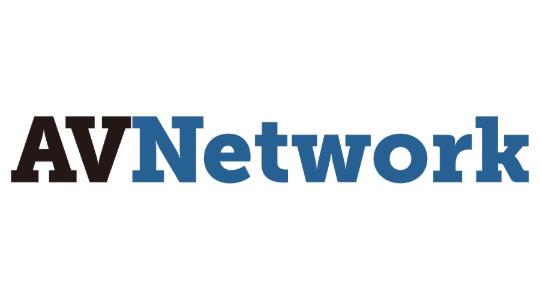The goal of IPMX is to deliver the performance that the Pro AV world needs for any application of audio and video, including live production and presentation workflows, and to do it in the real world where training, equipment, and budgets are not always optimized for success.
Audio networks have played a major part in AV installations and productions since the days of analogue. Now, in the days of digital and IP, with multiple devices and locations involved, the stakes are much higher. Kevin Hilton looks at the current state of the technology and how interoperability is now a deciding factor.
Enter a world where video is just video and we pick the devices that suit our needs best. Making AV over IP software friendly.
Along with the ever-increasing variety of devices added to networks, the complexity of commercial audio systems has skyrocketed. Audio and IT engineers need technologies that enable them to provide users with the most cutting-edge experiences while maintaining ease of use.
IPMX is built on SMPTE ST 2110 and is supported by a large base of manufacturers. Critical announcements from some new adopters of IPMX were showcased in live demonstrations, not possible with any other AV-over-IP protocols.
Built on ‘foundational’ standards work by SMPTE, VSF and AMWA, the IP Media Experience (IMPX) initiative – supported by AIMS, SMPTE, AMWA, VSF and JT-NM – looks poised to go mainstream during the next 12 months, writes David Davies.
The promise of IPMX is that it will change everything about Pro AV by meeting the market requirements of multi-vendor interoperability that only open standards can guarantee.
Leigh Whitcomb, architect at Imagine Communications, aims to take some of the confusion out of Precision Time Protocol.
In 2022 we’ve returned to a world where August is full of preparations for an in-person IBC2022 in Amsterdam! You’ll find IP Showcase at RAI Amsterdam, Sept. 9-12, in Room G102.
Visit IP Showcase to see demonstrations of open-standards-based IP media solutions and theater presentations from industry experts. Meet up with industry leaders and catch up with friends and colleagues at the social reception. Learn more about how open standards such as AES67 and SMPTE ST 2110 provide the stability, scale, flexibility, and supply chain security that comes from multiple vendor implementations following the same standards.
Set a reminder for a special event at the show: “SMPTE ST 2110 Launchpad.” Slated for Sunday, Sept. 11, from 10 a.m. to 12:30 p.m., it’s a free quick-start course focused on IP media systems. For a complete rundown of IP Showcase programming and events, visit www.ipshowcase.org.
The IP Showcase will build on the success of a great showing at InfoComm 2022 in Las Vegas just a couple of months ago. It was at that show that AIMS held the first live interoperability demonstration of Internet Protocol Media Experience (IPMX). The demo highlighted gateways between IPMX and other protocols, developer kits, and other elements of IPMX-enabled AV-over-IP workflows.
For a closer look at IPMX, check out Installation magazine’s “Special Report: AIMS IPMX Update” featuring Samuel Recine, chair of the AIMS Pro AV Working Group. It’s a fantastic overview of IPMX, its origins, and why it has so much potential in so many applications and Pro AV sectors. Recine also gave AV Network an insider’s perspective on the AIMS philosophy, vision, and roadmap. A recent article in the magazine highlighted the interoperability milestone reached with the IPMX demo at this year’s show.
AVNation’s Bradford Benn interviewed Andre Testa, senior director of FPG and hardware engineering at Matrox, about IPMX while at InfoComm. The two discussed reasons Matrox has gotten behind IPMX — namely that it is truly open-standards-based, and because once it’s popularized and adopted universally, users can pick and choose from among manufacturers. Matrox actually displayed a Matrox Convert IP device, which converts an HD signal to IPMX, on the AIMS booth.
SMPTE ST 2110 and broadcast-oriented IP workflows remain an important focus for AIMS, of course. AIMS Technical Work Group Chair John Mailhot, who is CTO of infrastructure and networking at Imagine Communications, recently authored a TVB Europe article on the subject. “Finishing the IP Transition” (page 17) focuses on standards for television signals over Ethernet/IP networks and how they’re supporting the design of new facilities worldwide.
The solutions page on the AIMS website provides an extensive listing of products that are compliant with the AIMS roadmap. As both the vendor and end-user communities for IP media solutions and workflows continue to grow, AIMS continues to showcase participants on the alliance’s website. The AIMS Vendor Guide is regularly updated to provide current information on AIMS members have not only enhanced existing products to support IP but also introduced new solutions that offer critical capabilities for IP-based media workflows.
All you really need to know about SMPTE ST2110 and IP video will be revealed today at 10:00 in the IP Showcase, in a session aimed at “anyone who has to talk intelligently about IP video and feels they don’t know enough”, according to Andrew Starks, Marketing Workgroup Chair at AIMS and Director Of Product Management, Macnica.






